Mérida: panem et circenses (bread and circuses)
Last year I was lucky enough to participate in a university trip to this marvellous city and see all the Roman ruins. Nowadays, the ancient remains converge in a modern Mérida and the importance and conservation of its archaeological complexes were key, now almost a quarter of a century ago, for UNESCO to declare the complex as a World Heritage Site.
Did you know that Emerita Augusta was a Roman city founded in the year 25 A. C. as an order from Augustus for his soldiers to settle down in after they had fought in the Cantabrian wars? It was a military foundation who occupied this key point in the western part of Spain. Did you know that from the year 15 A. C. it was the capital of the Lusitania province? The creation of this colony, which in a short amount of time saw great growth, echoes the ideology and propaganda which Augustus worked for as "princeps" or "primus inter pares" ("first among equals"). Thus, in Mérida you can find lots of places of interest and monuments from the Roman era. Do you still not know what they are? Here, you can come with me to the most important places to see in this city!
Places of interest
Visiting these different Roman ruins in the city depends on whether or not you have a pass to all of them or single tickets to each archaeological site: those who have student cards or under-25s cards can buy their tickets at a reduced price in both cases. The reduced price for the entrance to the Roman Theatre-Amphitheatre, to the Alcazaba, the House of Mithraeum-Columbarium, the Crypt of Basilica of Santa Eulalia, the Roman Circus; is from 7.50 euros. If you only want to visit the Theatre-Amphitheatre, the reduced price is 6 euros; whereas if you want an individual ticket to one of the other places it costs 3 euros.
Theatre-Amphitheatre
Perhaps the most representative of the Roman Emerita is the theatre. Inaugurated by the year 16 A. C. after the city had been founded and in only ten days, they achieved the full reinforcement, organisation and structure which made the creation of this place possible. It was a place where people could enjoy pure "otium" ("entertainment").
Nowadays, the theatre has been reconstructed and it has duplicates of some of the sculptures on the "scaena" ("stage"). The original statues are in the museum.
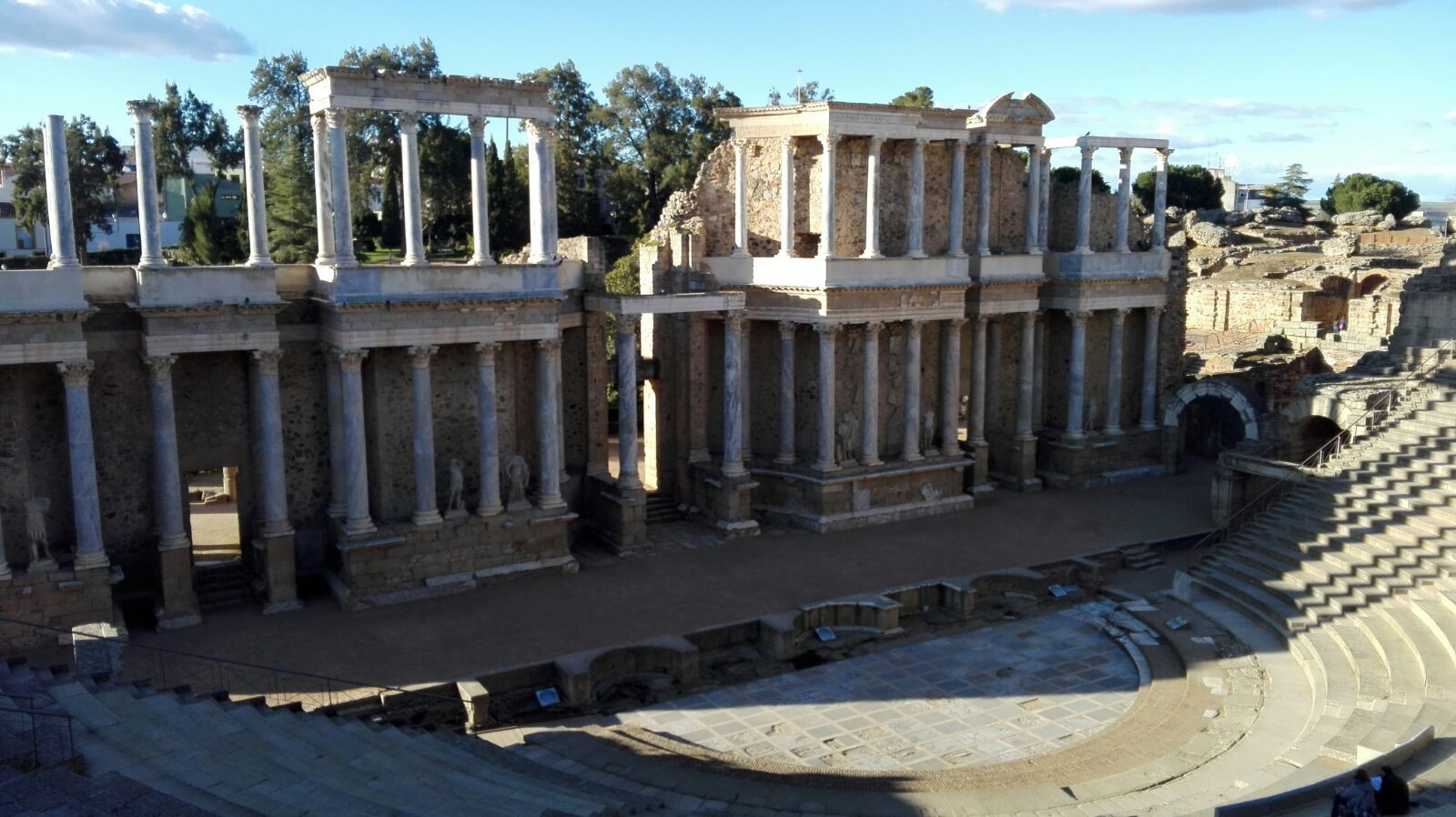 View of the Roman Theatre in Méida from the stands
View of the Roman Theatre in Méida from the stands
It's worth mentioning that these days you can walk along the stands and for those who are interested in the History but also want to have a good time, they also put on representations of classic plays
in the actual Roman theatre! These take place some nights during the summer and the price ranges from 12 to 40 euros, depending on the performance and where you're sat in the stands. You can buy your tickets online and, this year in particular, the theatrical performances will take place between 5th July and 27th August.
Near the theatre, you'll see the amphitheatre, of which there are remains in the museum, such as inscriptions, chandeliers and frescoes with gladiator and beasts scenes, which decorated the podium of the amphitheatre. Going back to the subject of tickets, the price to visit the theatre and to visit the amphitheatre at night is around 12 euros per person.
The circus
Regarding the circus, it's about 400m long and 100m wide. When it was built, people would watch from outside the walled complex and they were able to get around 30,000 spectators in the stands. Just to warn you, you're not allowed to go in the stands area (something which we did, as we didn't know). The stands area, unlike in the theatre, has lost a large part to it (you can see it in the photo below). In this place, we decided to something which is out of the ordinary: we had a race amongst ourselves, imitating the circus competitions of the Roman village. If you give it ago, you'll realise just how big it is, as a Roman circus!
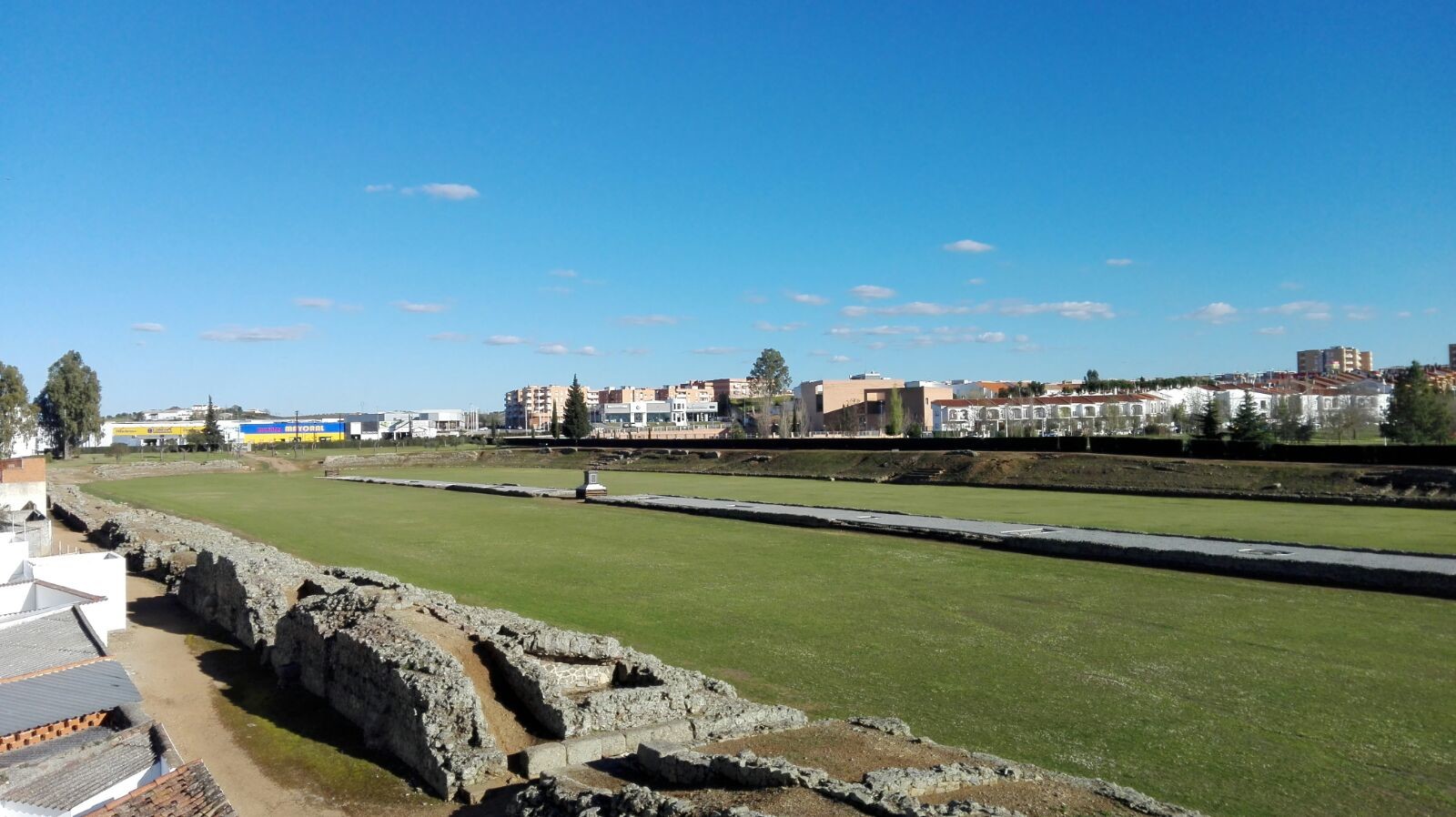 View of the Roman Circus in Mérida
View of the Roman Circus in Mérida
The Roman bridge
The three monuments I mentioned previously all belong to the "otium", the entertainment sector of the Roman population. But other remains reaffirm how significant this flourishing city was. Take the Roman bridge for example, which connects the north and the south: "ab Emerita Asturicam" ("from Mérida to Astorga). It's a very well preserved bridge and in addition, you can still go over it. In fact, the hotel where we were staying is on the other side of the bridge, it was a wonderful walk over every day.
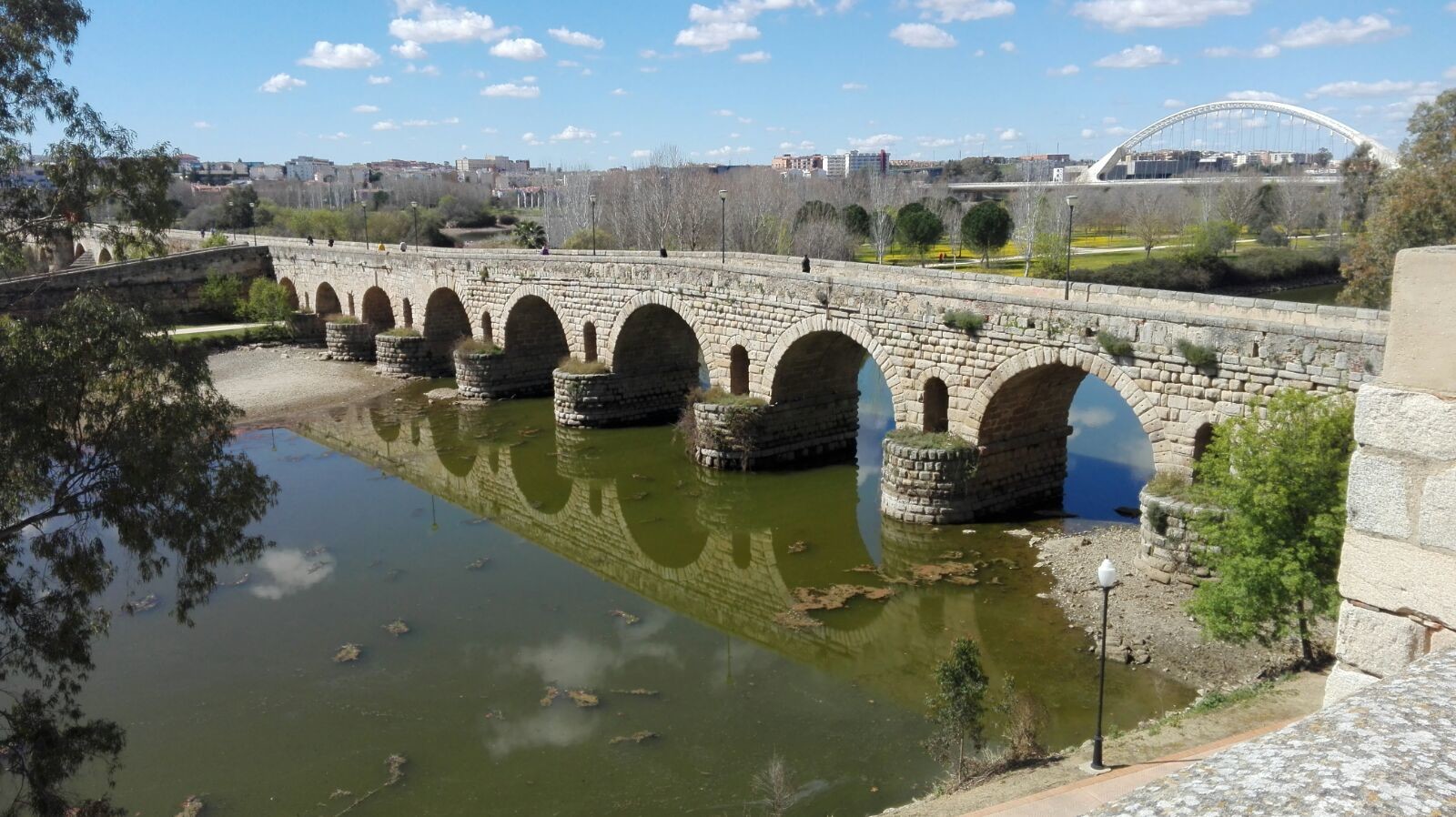 Roman bridge in Mérida
Roman bridge in Mérida
The Alcazaba and other places
Next to the bridge you'll see the alcazaba, an Arab fortress which was there to control the foreigners and traders coming into the city. Built by Abd ar-Rahman II in the year 835, it was a place where the troops stayed in case of a siege (inside it had a cistern with water from the river Guadiana, resources which you could live off for a few days). In relation to the water supply, it's also worth mentioning the Proserpina reservoir from the 1st century A. D. (at 5km away from the city) and the Aqueduct of the Milagros.
The Moors and the House of Mithraeum
Not too far from the alcazaba you'll find the Moorish archaeological site (you need to ask for access to this site beforehand), a complex of Roman houses which the Moorish building has been built on. Nowadays it's the headquarters of different offices for the Extremadura Parliament. Continuing with the domestic environment, you can see the House of Mithraeum, which was built in the middle of the 1st century D. C. These two sites are very well preserved, and I highly recommend going on a guided tour there to be able to find out about each area.
 One of the rooms in the Moorish house
One of the rooms in the Moorish house
The National Museum of Roman Art in Mérida
On another note, a special mention to the National Museum of Roman Art in Mérida is in order. It's one of the oldest museums in Europe and it has been awarded for its architectural design. It has two perpendicular transparent vessels which is like the actual Roman architecture (baths, Trajan's Forum, etc... ). The entrance to this museum is from 3 euros, although on a few specific dates you can go inside for free. Some of the most remarkable pieces in the museum are the preserved mosaics, as well as capitals, inscriptions, funerary stele, portraits and busts. However, one of the most interesting objects in the museum is, in my opinion, a Roman ceramic which is reflected on the buildings in the city; maybe its aim was to be like a souvenir for all its visitors. This is still common nowadays, we still have souvenirs when we go to interesting places.
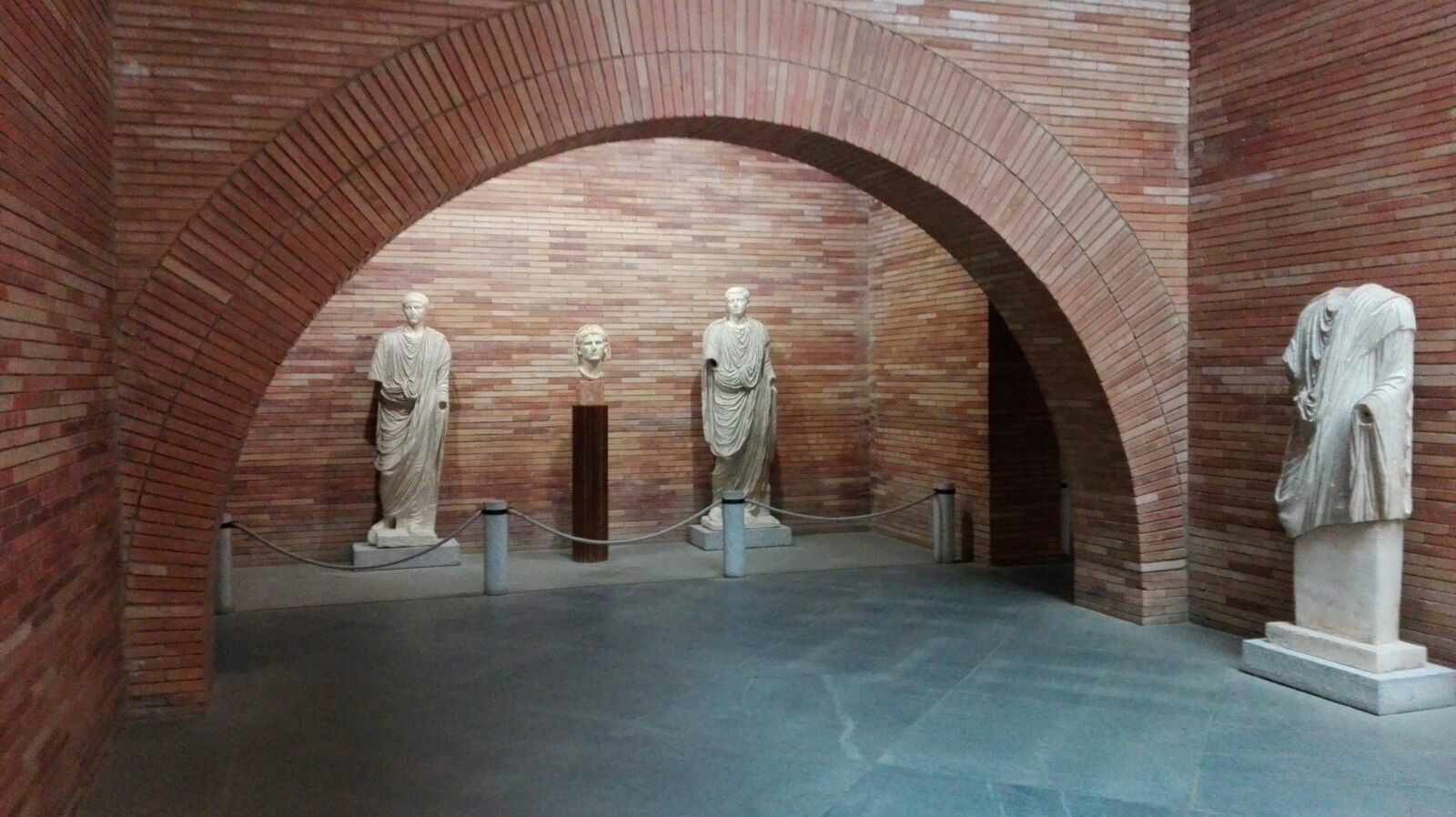 One of the galleries in the Museum of Mérida
One of the galleries in the Museum of Mérida
In the museum, you can also visit a crypt: there are gravestones, funerary monuments and living rooms. There's also a tunnel which connects it to the amphitheatre, but it's closed to the public (on a few special occasions they open it to the public and you can go through it), and a segment of a road which connected to the Ermita-Corduba road (in the 4th century A. C. ).
Forums
In addition to that, Mérida has a Forum area where administration matters of the capital and the province would be dealt with. The colonial forum is divided into the temple, square and basilica; whereas in the provincial forum you can find the great Trajan Arch, amongst other remains.
Diana Temple
In the religious environment the Diana Temple stands out. It's a peripteros and hexastyle temple which catches your attention, and part of its structure is still preserved today. In the middle of the temple there's the Palacio del Conde de los Corbos (known in that time as the "House of the Milagros"). It's a building from the Middle Ages built above the foundations and it was key in the conservation of the temple. Just when we were visiting the city, they were doing work to it so we could go inside the palace, therefore, it's possible that when you go, you'll be able to tell me what you think of it from the inside.
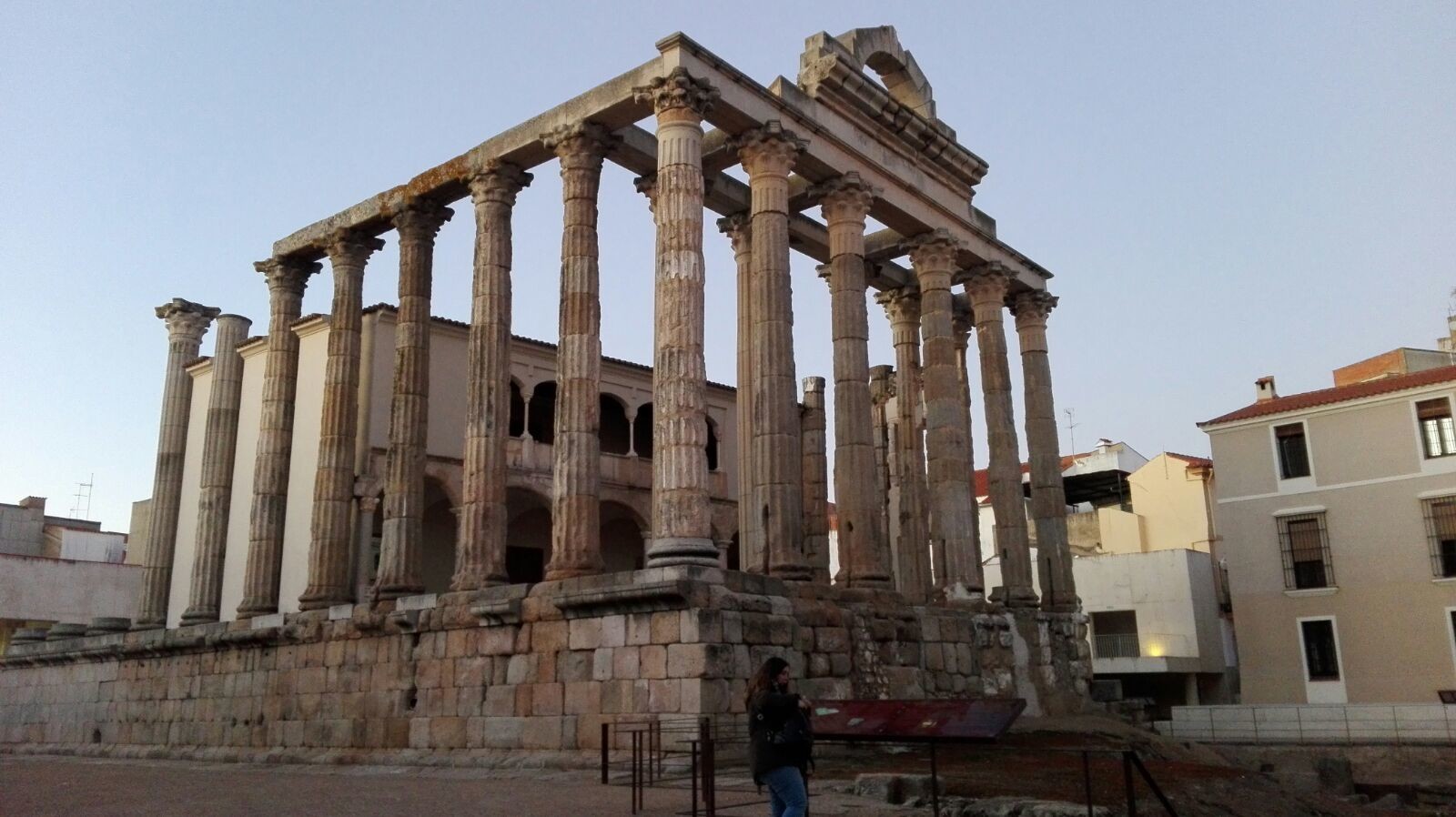 View of the Diana Temple
View of the Diana Temple
A trip you can't miss out on
Thus, the conservation of ancient heritage in Mérida is one of the best: they have carried out a lot of work on it, as well as important investments, which make it possible to go back through Ancient times to a beautiful city which has so much more to offer. I would like to highlight once again the different performance groups, which during the summer nights, give us a moment of "otium" which the inhabitants of Emerita enjoyed centuries ago in the exact same place.
There's no doubt that you'll find it one of the most outstanding town centres in Mérida because of its awareness of the Roman civilisation in a Hispanic context. Don't lose out on this experience of spending a few days in a Roman city like this one!
Photo gallery
Content available in other languages
- Español: Mérida: panem et circenses
- Italiano: Mérida: panem et circenses
Want to have your own Erasmus blog?
If you are experiencing living abroad, you're an avid traveller or want to promote the city where you live... create your own blog and share your adventures!
I want to create my Erasmus blog! →





















Comments (0 comments)